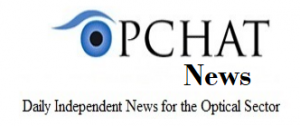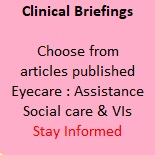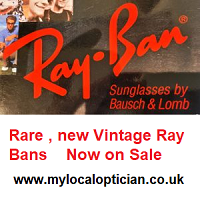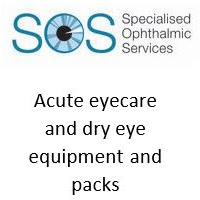Varilux continues to push the boundaries of innovation
 Varilux has enriched the lives of millions of presbyopes from around the world and professional relations manager at Essilor Ltd, Andy Hepworth, reflects on its journey of innovation and the latest breakthrough varifocal lens, Varilux® XR series™, which launches in the UK this June.
Varilux has enriched the lives of millions of presbyopes from around the world and professional relations manager at Essilor Ltd, Andy Hepworth, reflects on its journey of innovation and the latest breakthrough varifocal lens, Varilux® XR series™, which launches in the UK this June.
Since launching 64 years ago, Varilux has repeatedly pushed the limits of technology and innovation, with many patents being filed over the years.
Here we look at its journey of innovation and how the lens has evolved over the years.
VARILUX TIMELINE
After trying his father’s bifocals in 1950, Bernard Maitenaz considered the conceptual idea of a progressive lens. Several years of uphill struggle against optical professionals not believing it to be possible, in 1959 Varilux 1 was the first ‘Progressive Power Lens’ design to be launched.
Then Varilux 2 arrived in 1972 quickly establishing itself as the best way to correct presbyopia and by 1978 12,000 people were wearing Varilux lenses.
A key landmark in independent research was the International Presbyopia Symposium which Essilor sponsored, bringing together academic research from across the world, in particular the great work of Dr Irvin Borish of University of Houston.
It was this research that led to the launch of globally the most dispensed PPL design, Varilux Comfort, in 1993 offering the wearer a more comfortable posture while reading. Varilux Comfort was indeed the first design to understand the great importance of the lower part of the intermediate channel (85% Add) when a user was reading a hard copy document.
Another important innovation was the launch of Varilux Ipseo in 2003 which allowed us to personalise Varilux lenses for the first time. A VisionPrint System measured the pattern of eye movement of each individual patient. When a patient viewed a lateral object, they moved both eyes and head but whether the patient moves their eyes or head more, depends on each individual patient. This pattern was measured and used in the design of this lens.
Fast forward to Varilux X-series which launched in 2017 and there were great similarities in the key features which delivers onto the end wearer a design that allows them to see clearly within arm’s reach to accurately capture detail from a digital screen.
The key foundation that ensured Varilux led the way was the LiveOptics approach, a design process that put the end wearer at the core of development. Researchers were able to collect behavioural and physiological data to ensure that varifocal features answer the wearers’ needs.
However, it’s latest innovation, Varilux® XR series™, which launches in the UK this June, has taken the design process one step further.
For the first time EssilorLuxottica’s scientists have managed to harness the power of artificial intelligence (AI) and combine it with their unmatched understanding of consumer lifestyles to create the first eye-responsive varifocal lens*.
Today’s wearers are facing an information overload. With more than 100,000 eye movements a day, it forces them to slow down to maintain sharpness.
![]()
Varilux® XR series™ is the first eye-responsive varifocal lens, powered by behavioural artificial intelligence leveraging more than one million pieces of exclusive real-life data. By predicting the visual behaviour of the patient and bringing binocular optimisation to the next level, XR-motion™ technology reduces the optical disparities between the two lenses and ensures precise positioning of the focus zones adapted to each wearer.
As a result, Varilux® XR series™ lenses offer instant visual sharpness even in motion, adaptation from the first day and natural ocular navigation.
The power of artificial intelligence lies in the quantity, quality and variety of data and the way it’s analysed. Insights and data have been collected from end wearer orders, real life wearer tests, in store measurements and physiological models.
Thanks to digital twinning technology, we can now establish a visual behaviour profile for every single prescription and provide the first eye-responsive lens that respects the natural behaviour of the eye.
This allowed our Essilor R&D team to establish a visual behaviour profile using virtual modelling to copy real life tasks for every single prescription and provide a lens that supports the natural behaviour of the eye.
With Varilux® XR series™ wearers benefit from instant sharpness, even in motion, with up 49% more vision volume** compared to Varilux X series. In independent third-party tests, 87% of consumers, wearing mostly premium varifocal lenses, preferred Varilux XR series to their previous lenses, after trying them, with no change in their prescription***. And 95% of wearers adapted to their new lenses on the first day.
The Varilux timeline of innovation [see accompanying image] also includes Varilux Multi-Design launching in 1988, Varilux Panamic in 2000, Varilux Physio in 2006 and S Series in 2012 with ten generations of the lens in total.
JOURNEY OF INNOVATION
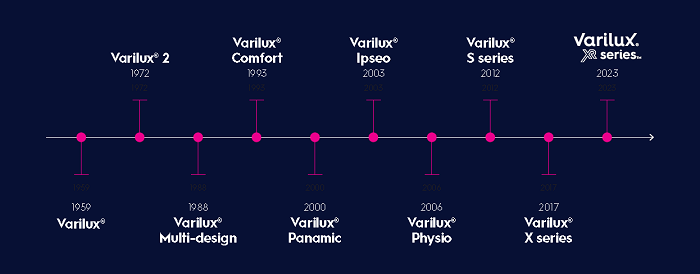
Varilux has led the way in more than just core design features but in personalisation too. The lens has continued to advance through a series of technological innovations, setting the bar for visual comfort for presbyopes. To achieve the most natural vision possible an individual’s behaviour, the interactions of the eye, retina and brain have been gradually integrated to create a bespoke solution.
It’s amazing to think back over just the last 30 years about how very different the devices we use to read off today are and thereby how a presbyope holds a device and positions themselves whilst observing this target.
It is exactly this parameter which resulted in the design of Varilux® XR series™, so moving forward 30 years it’s clear this background understanding of exactly what and how a current wearer is seeing is why Varilux has been able to lead the way in varifocal performance.
When crafting our lenses, we can now bring together AI, human expertise, and cutting-edge engineering. Our constant innovation concentrates a large workforce of scientists resulting in many patents in a single lens.
The lens has achieved so much and will no doubt keep on delivering on its journey to a century. The coming years will involve even more amazing improvements to lenses and people’s lives.
I can but speculate as to what future generations of Varilux will deliver to an end wearer, but I know that the teams of people working behind the scenes know they must ensure it continues to set the standard for other designs to follow.
Our research team has recognised that the life of a presbyope is ever changing. Today’s over-40s are far more demanding in terms of performance than their parents and don’t want to feel the first signs of age. They truly enjoy life and engage in so many varied activities through sport, work, travel and reading that they demand a lens which supports this. These presbyopes are understandably concerned by loss of visual acuity but the future generations of Varilux lenses will strive to address and answers these concerns to continue improving lives by improving sight.
Read about Launch day and the lens characteristics

